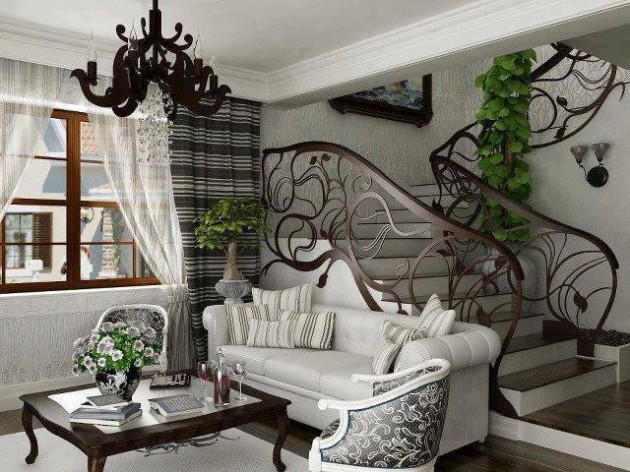
The Tessle House, Brussels, Victor Horta
Art Nouveau was born at the turn of the 20th century when Europe was in a period of peace and prosperity. This economic growth allowed designers and artists to experiment in various areas of design; and with this new freedom, came the rejection of previous academic models. Artists now found their inspirations from Japanese art and paintings of the decade. The beginnings of these movements were found throughout Belgium and France.

Dragonfly Pitcher, Emile Galle
This up-and-coming style still rejected the Victorian styles like the Arts and Crafts movement, but it supported the use of modern techniques to create and assemble. There was also the inclusion of modern materials like iron and glass and the incorporation of electric lighting. Curvilinear forms were also a dominant form throughout Art Nouveau. Some of the defining features were the use of decorative ornamentation, paintings, and sculptures.
Art Nouveau in Belgium:


One of the most prominent artists in Belgium was Victor Horta. An architect and designer, he was known for his use of enivornmental motiffs, unique iron railings, and stenciled walls and ceilings. It was typical of him to use mosaic patterns on the floors, ceilings, and walls as well. Horta also preferred a more asymmetrical symmetry.


Another renowned designer was Henry van de Velde. He was designer of the shop L'Art Nouveau that was owned by Samuel Bing in Paris. His works were the beginning of the bridge between the continental art in England and the United States.
Art Nouveau in France:


In France, Hector Guimard made many strides in the Art Nouveau world. Some of his most famous works are the metro entrance signs and detail elements. He was also designed fireplace mantels, window and door trims, and tiles; all which would be considered decorative pieces.
Art Nouveau in Spain:

In Spain, Antoni Gaudi took reign of the Art Nouveau style with his projects like Casa Batllo. This was an especially unique piece because of its bold design, colors, and architectural elements. It displayed Gaudi's use of flowing curves and unusual decorative elements like the "scales" on the roof.
Art Nouveau in the United States:

While Art Nouveau had become very popular in European countries it did not make such an impact on the population over in the United States. Most of these works were confined to the designs of Tiffany and Sullivan.
Current Applications:



Other Blogs:
I looked at Justine's blog and I really like how she found separate images to represent how Art Nouveau was displayed in each country. I was a good way to display the information because you could see the similarities and differences in the styles between each country.
I also read Megan Y's blog and I also like how she addressed each country that Art Nouveau influenced but also brought attention to the most prominent artists of the period in those countries.
Additional Links!
https://www.youtube.com/watch?v=P4luPnObQYo
Additional Links!
https://www.youtube.com/watch?v=P4luPnObQYo
No comments:
Post a Comment